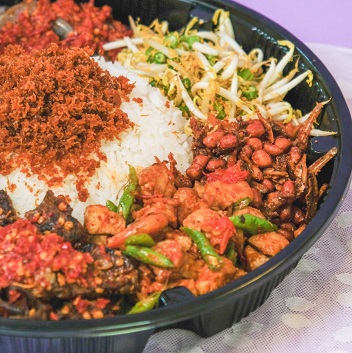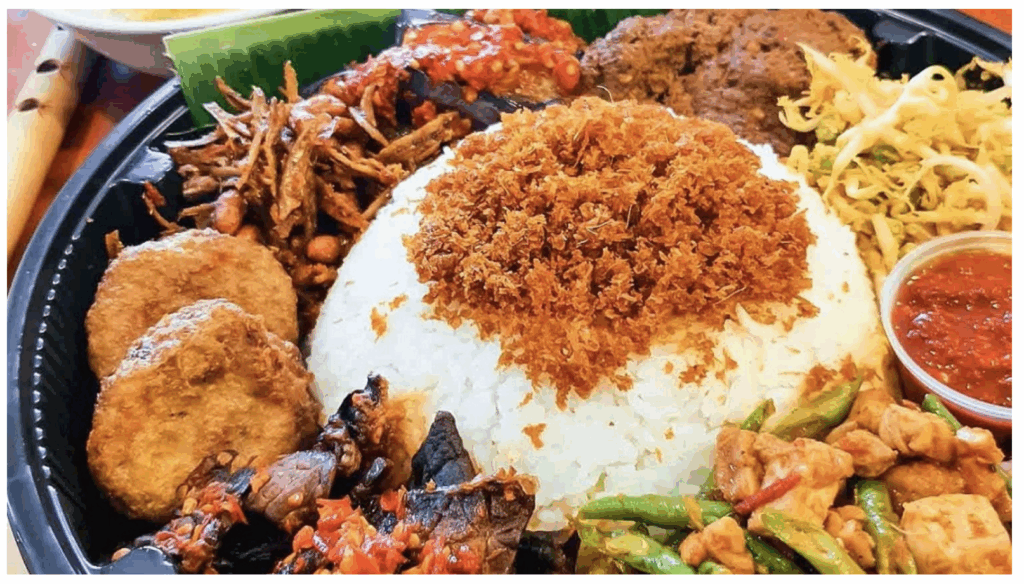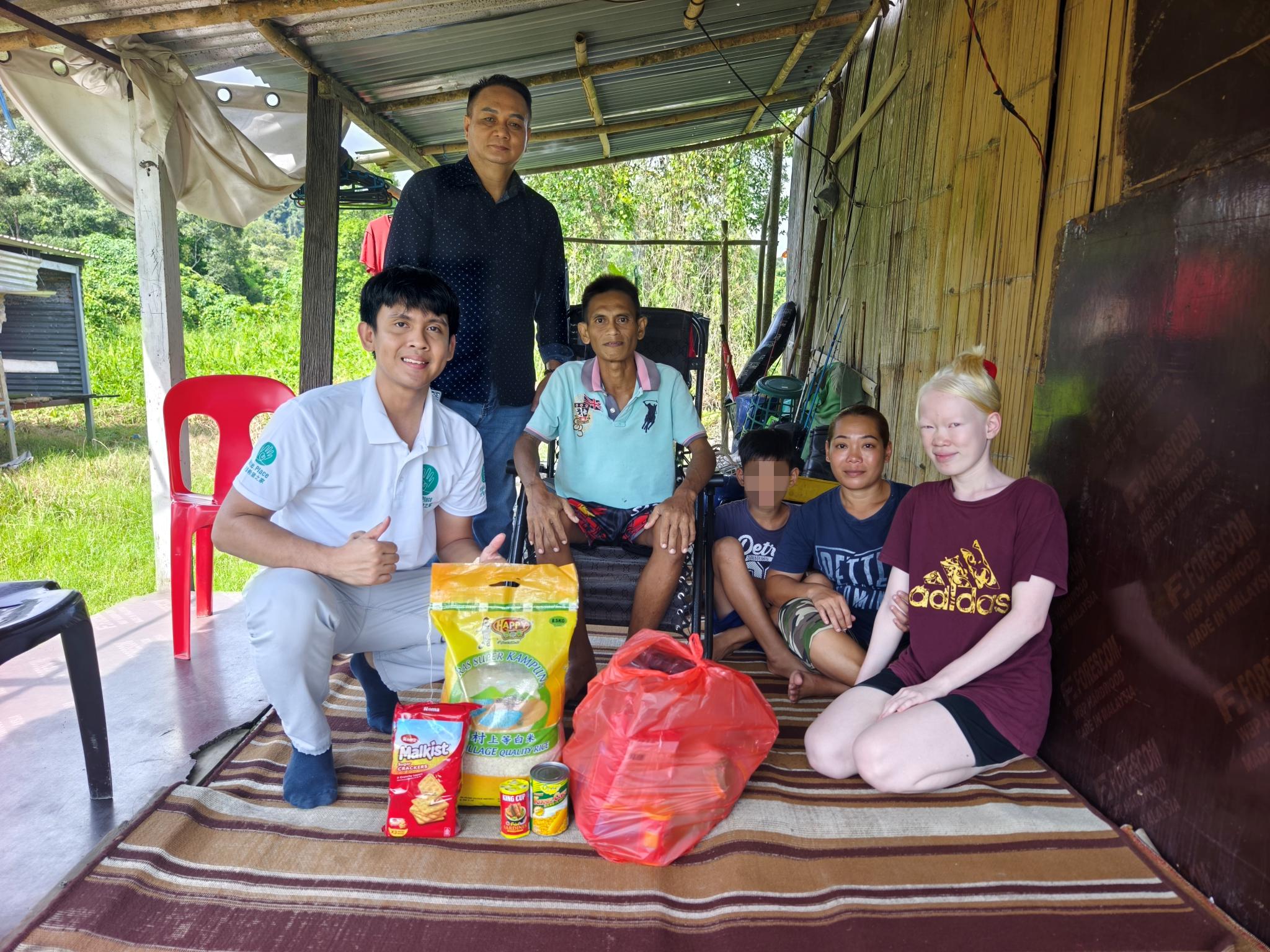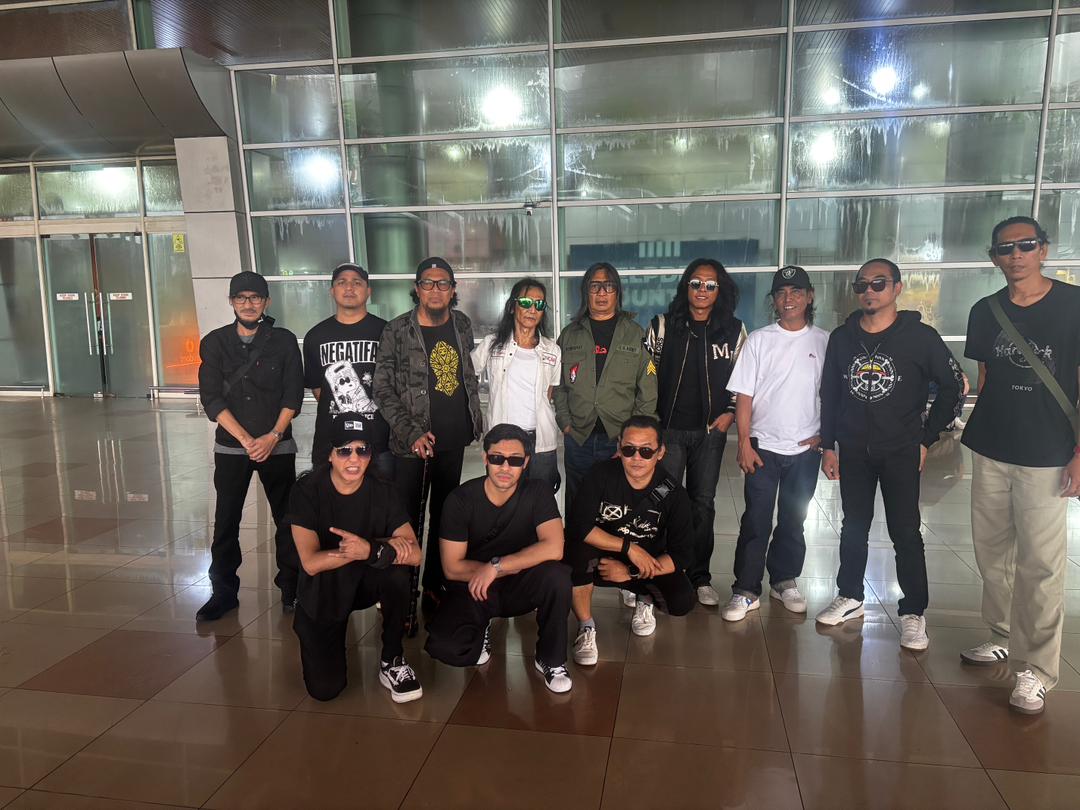SERIAN: Heard of ‘nasi ambeng’ before?
‘Nasi ambeng’, also known as ‘nasi ambang’, is a traditional Javanese sharing platter in the style of ‘nasi campur’, which is steamed rice surrounded by side dishes, according to an article by the Michelin Guide.
Typically served during celebrations and festivals, the dish features a central mound of steamed rice on a round tray lined with banana leaves, surrounded by an array of meat and vegetable side dishes.
These usually include ‘beef rendang’,’ ayam lemak’ (chicken cooked in coconut and spices), ‘sambal goreng’ (a mixture of long beans, beancurd and ‘tempe’h fried with sambal and coconut milk), and ‘urap’ which consists of vegetables tossed in spiced grated coconut.
Closer to home, ‘nasi ambeng’ is also a popular dish among the Javanese community in Sarawak.
As described by Deputy Minister of Rural and Regional Development Datuk Rubiah Wang, ‘nasi ambeng’ is more than just a dish; it is a cultural symbol and expression of identity for the Javanese community, reflecting values of togetherness and unity.
Speaking during the ‘Makan Nasi Ambeng’ ceremony held at Kampung Sungai Bandung Community Hall in Serian recently, she said such traditions aligned with the government’s efforts to strengthen national identity and uphold harmony among the various races — a crucial foundation for the country’s stability and progress.
“When we sit at the same table and eat from the same tray, no one is above or below another – everyone is like family. That is the strength of our culture,” she said.
In the context of Sarawak, she also emphasised that the state’s political stability had served as a catalyst for major investments and rapid development, particularly in the fields of education and employment opportunities.


For infographic:
History of ‘nasi ambeng’
The Javanese community in Malaysia has a rich culinary heritage that has been passed down through generations.
‘Nasi ambeng is believed to have originated from the Javanese village of Kampung Puteh in Johor.
The dish was traditionally served during celebrations and special occasions, such as weddings and Hari Raya Aidilfitri.
Info credit: Munch Malaysia

Preparation of ‘nasi ambeng’
The preparation of ‘nasi ambeng’ requires careful attention to detail. The rice is typically cooked using a traditional method, where it is first rinsed and soaked before being steamed with pandan leaves and coconut milk.
The fried chicken or beef is marinated with a mixture of spices and herbs, such as turmeric, coriander and lemongrass before being fried until crispy and golden brown.
The ‘sambal belacan’ is made by blending together a mixture of chilli peppers, garlic, shallots, and shrimp paste.
The ‘tempeh ‘ and tofu are fried until crispy and served with a sweet and savoury sauce made from soy sauce and palm sugar. The vegetables are blanched and served with a chilli and lime dressing.
Info credit: Munch Malaysia















